Hello and welcome to the Part 2 of MNA’s 2022 Trends.
This week I will continue to offer our team’s perspective on key trends impacting Montana’s nonprofits in 2022. Last week I touched on workforce, equity, well-being, hybrid workplace/events, and tech advancements. This week I’m focused on trends in giving. Read on for our overview of a few of the key trends including household and corporate giving, online giving, giving days, donor advised funds, and equity in philanthropy.
Giving Trends in 2022

Household Giving
According to the most recent Blackbaud Institute Index, as of September 30, 2021 giving was up 8.1% over 2020. Year over year increases were most significant in the largest organizations, those with annual fundraising revenue of more than $10M. Arts and culture organizations saw larger year over year increases than many; however, they started from behind given the 2020 priorities reported by Giving USA: education, human services, public-benefit society, international affairs, and environmental/animal causes.
While there are indications 2022 will follow suit in terms of larger donors and larger organizations, there is growing concern about a continued decrease in smaller donations and household giving. A report by the Johnson Center offers several other possible reasons for the decrease, including student loan debt, pandemic related stressors, other forms of peer to peer giving for younger donors, and the growing wealth gap. At the same time donations by people of color increased in response to issues of racial justice, including pandemic related health and resource disparities.

Corporate Giving
In December, Giving USA predicted corporate giving would remain robust, depending on how the stock market performs, which is an unknown. Coming into the year there was a general expectation the market would be strong. However, history suggests the market is due for correction.
Beyond corporate financial support, the drive for “meaningful work at work” means more corporations are interested in going beyond giving to offering opportunities for employees to engage with the causes nonprofits serve. This is an opportunity for nonprofits that have flexible and thoughtful volunteer programs.

Crypto
Rumor has it, cryptocurrency is here to stay and should be taken seriously by development teams. What does that mean? Most of us don’t really know. However, it’s time to learn more and understand how crypto gifts fit into a gift acceptance policy. According to Fidelity Charitable, data shows that owners of cryptocurrency are generous, often they are millennial donors, and they struggle to find nonprofits that will accept crypto donations. This may be an organizational learning goal for 2022.

Online Giving
Online giving will continue to grow. According to Blackbaud Institute, online giving in 2020 increased 20.7%, with a three-year increase of 32%. 28% of online gifts came from a mobile device. Some of this is due to peer-to-peer fundraising, some is simply the increased use of mobile, and some is related to virtual events. Three related notes:
- Optimizing websites for mobile donations is a priority.
- Online giving increases risk of security breaches, driving up the need for cybersecurity risk management, including cybersecurity insurance.
- Online giving will not replace relationships. It is perhaps even more important to engage personally with donors now than it has ever been. The WAY people give has evolved, but WHY they give remains unchanged.

Giving Days
Even with a screen weary population, virtual 24-hour events are likely to grow in 2022. Charity Navigator reported a 29% increase on Giving Tuesday, December 2020 over 2019. The April/May “Give Big” events in communities across Montana are record-breaking events every year, both in terms of amounts given and numbers of donors engaged. Why are they working?
- The use of social media and networks to fundraise;
- Small gifts put philanthropy in reach for inexperienced donors and those with less to give;
- Shared publicity efforts make a big splash.
- Fear of Missing Out (FOMO) is real! Everyone wants in!

Donor Advised Funds
We expect regulatory conversations about distributions, equity, and transparency in Donor Advised Fund (DAF) to continue in 2022. This policy discussion is taking place among nonprofits, within the network of state nonprofit associations and other advocates, as well as in the Foundation community.
Regardless of policy issues, according to the National Philanthropy Trust, Donor Advised Funds are now the most popular giving vehicle, growing dramatically in 2020 both in terms of amounts being invested and amounts being distributed to charitable nonprofits. Because Donor Advised Funds are an unknown for many, it is easy to assume they are out of reach without highly specialized expertise. However, there are effective ways to bring this resource into your fundraising strategy and lots of information on how to do exactly that.
Given the popularity of DAFs, we recommend learning more.

Equity in Philanthropy
In 2022, equity is at the forefront of philanthropic conversations. Foundations, think tanks and many industry leaders have been talking about equity in philanthropy for years. In 2017 Vu Le was hot on this topic. He still is, along with Bridgespan, United Philanthropy Forum, and Montana’s regional association of grant makers, Philanthropy Northwest, to name a few. But something is missing.
A quick Google search brings up scores of links to pieces about equity in philanthropy written by foundation leaders, philanthropic support organizations, and/or industry thought and opinion leaders. Interestingly it is near impossible to find articles about this topic written by charitable nonprofit executives like me who come from a place of privilege and work in organizations that are recipients of philanthropy. This gives me pause.
I don’t have a ready solution. But the MNA staff and Board are currently identifying and moving forward in tangible ways to leverage our resources to increase equity in Montana, including philanthropic equity. We fully believe MNA as both an organization and an association of 750 nonprofit and affiliate organizations can help Montana be a place where more people experience a deep sense of belonging and opportunity. We look forward to sharing and doing more in the months ahead.
Of course there is more to say – but we hope this brief curated overview helps equip you to be strategic in the months ahead. To support your growth in fund development, we are excited to announce MNA is hosting a 2022 Fundraising Summit: Equity and Opportunity, on June 1 in Helena and online. In addition to a phenomenal national keynote who will remain unnamed for just a few more days, the Summit will include breakout sessions on essential skills and best practices in the evolving world of nonprofit fund development.
Resources
- Johnson Center Trends in Philanthropy
- Giving USA Trends for 2022
- Blackbaud Data on Online Giving
- SSIR on Donor Advised Funds
- Nonprofit Quarterly on Raising Money From Donor Advised Funds

